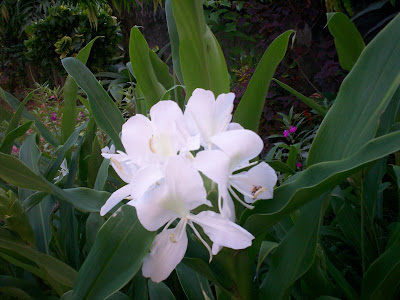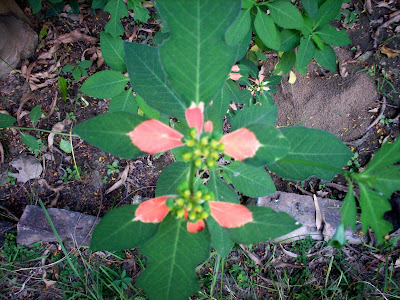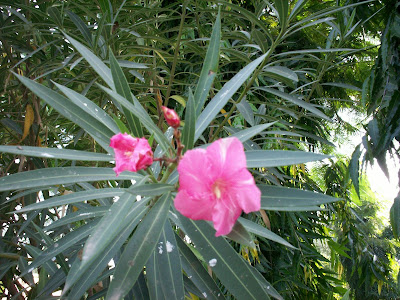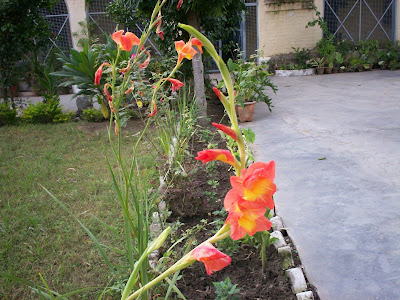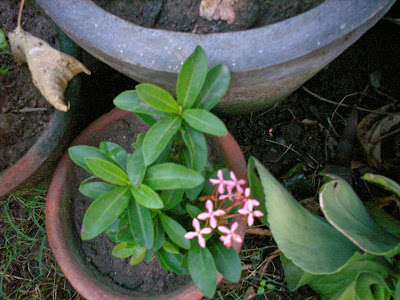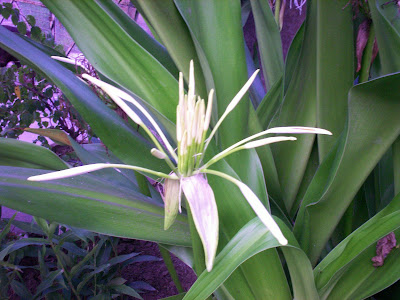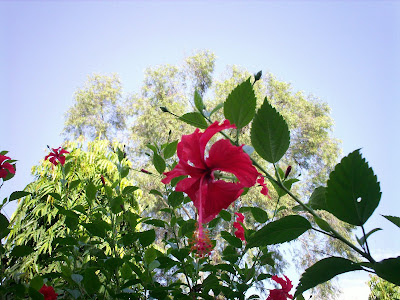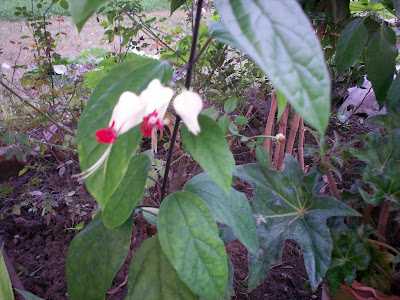Beginning of October has seen some sudden drop in the night temperatures, though the days are still very warm and sunny. Usually this drastic change of weather is an invitation to flu and that is what bugged my daughter and then the rest of us over the past few days. It is really a surprise that despite such advances in medical science, with all that research going on in the fancy areas of AIDS, cancers etc, there has not been much one can do about flu by way of medicines.
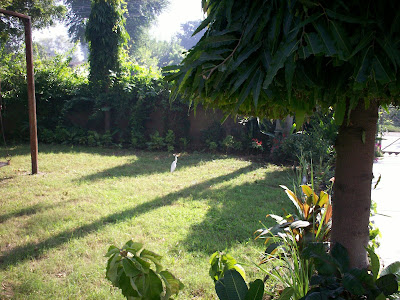
Well with, hopefully, my seasonal quota of illness over I set out to take a measure of things in my vegetable garden, and there the leaves of Colocasia had turned yellow and started falling-time to harvest the tubers or corms. It was around 7 months back, in the month of February, that I had planted the corms. Thereafter the bed was left all alone except for hoeing and earthing one or two times in the following four months.
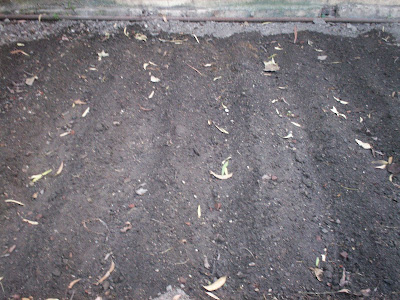
Without any pestering or pampering, the corms continued to mature below the soil and signaled their presence in April by giving out the first leaves.
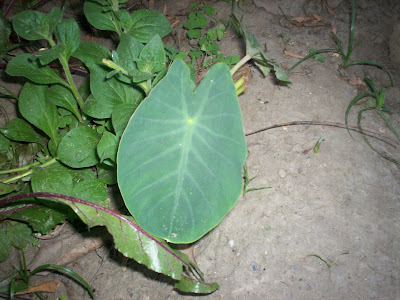
The rainy season(monsoon) which followed the month of May-June was a boon for the leaves as they acquired reasonably big proportions in it. In some homes, the fresh green leaves of this plant are coated with gram flour and fried, the resulting ‘patodas’, as they are known in local language, are very crisp and spicy. They induce a slight 'stinging' sensation to mouth and the throat, and are loved precisely for the same reason; not everyone likes that though.This stinging sensation is due to the presence of calcium oxalate crystals.


Now the leaves have started turning yellow and some of them have fallen off, signaling the time for harvesting the corms

The corms are now dug up…

The cormlets are detached

The mother corm is then stored in a dry place to be planted in the next growing season.
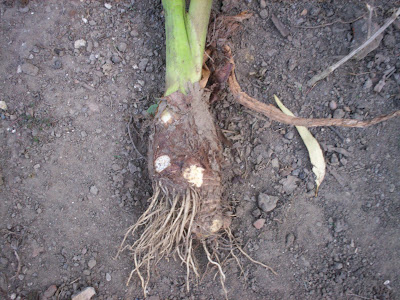
Finally the potato like starchy corm is ready to be cooked and eaten.
Colocasia esculenta, also known as
Arabi here in India and
Taro in many countries around the world, is a widely eaten vegetable. It looks and tastes like a potato, but is nutritionally superior to potato, and the leaves too have a nutritional value same as that of spinach.The corms are a good source of Carbohydrates and Potassium.They also contain good quantities of Vitamin B complex.
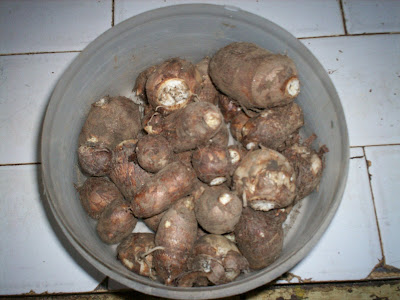
As an afterthought, I feel, that till the time a definitive treatment for viral nuisances like flu, is found, we will have to trust fresh vegetables and fruits to ensure a speedy recovery, and if they are home grown, it is- good bye flu!
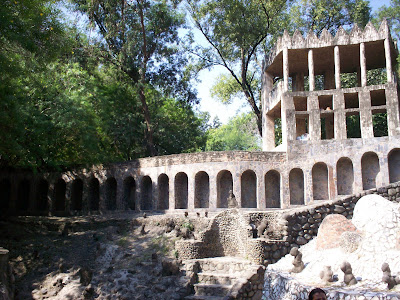 It is a marvel of a common man’s imagination. The garden was conceptualized by an official of a transport office, Mr Nek Chand who wanted some space to pursue his deep passion for sculpting and gardening. He cleared a patch of jungle and started making sculptures with whatever he could lay his hands on, working mainly at night out of the fear of being detected in the day. When finally authorities came to know of the existence, initially they were appalled on the illegality of the creation, but then pragmatism prevailed and judging the artistic quality and potential of the thing, they gave him an official sanction and a grant to carry on with the job.
It is a marvel of a common man’s imagination. The garden was conceptualized by an official of a transport office, Mr Nek Chand who wanted some space to pursue his deep passion for sculpting and gardening. He cleared a patch of jungle and started making sculptures with whatever he could lay his hands on, working mainly at night out of the fear of being detected in the day. When finally authorities came to know of the existence, initially they were appalled on the illegality of the creation, but then pragmatism prevailed and judging the artistic quality and potential of the thing, they gave him an official sanction and a grant to carry on with the job.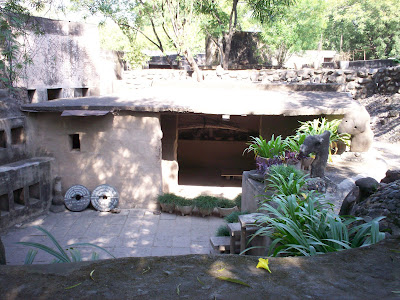
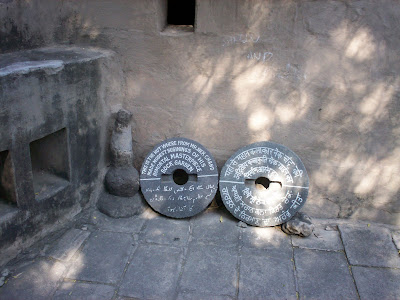
 Who would have thought of using condemned telephonic wires or electricity sockets to be made into something as artistic!
Who would have thought of using condemned telephonic wires or electricity sockets to be made into something as artistic!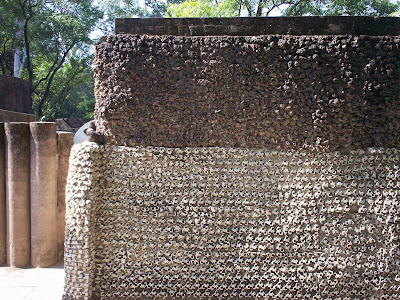
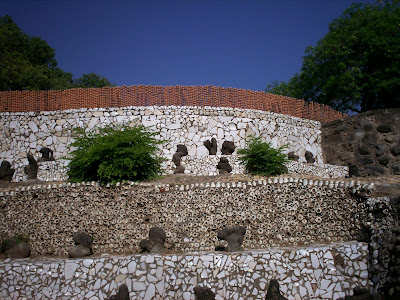 The matted roots looked so real that I had to touch them to confirm that they are actually carved out rocks!
The matted roots looked so real that I had to touch them to confirm that they are actually carved out rocks!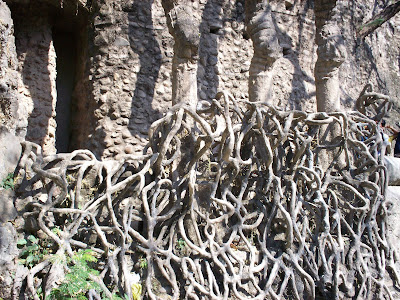 Rows and columns of pots used to create partitions.
Rows and columns of pots used to create partitions. Broken bangles, discarded pieces of broken china, house hold plumbing…almost anything, inanimate and existing, has been used to sculpt these cute figurines.
Broken bangles, discarded pieces of broken china, house hold plumbing…almost anything, inanimate and existing, has been used to sculpt these cute figurines.

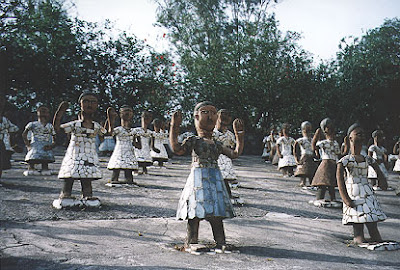 Works like these are an inspiration. It’s not just the beauty that one appreciates; these places stimulate one to be creative, imaginative and loving towards Mother Nature.
Works like these are an inspiration. It’s not just the beauty that one appreciates; these places stimulate one to be creative, imaginative and loving towards Mother Nature. I hope my little one learned a thing or two from the visit. As of now she is infinitely more interested in breaking things than to create any thing worthwhile from broken objects:-)
I hope my little one learned a thing or two from the visit. As of now she is infinitely more interested in breaking things than to create any thing worthwhile from broken objects:-)

